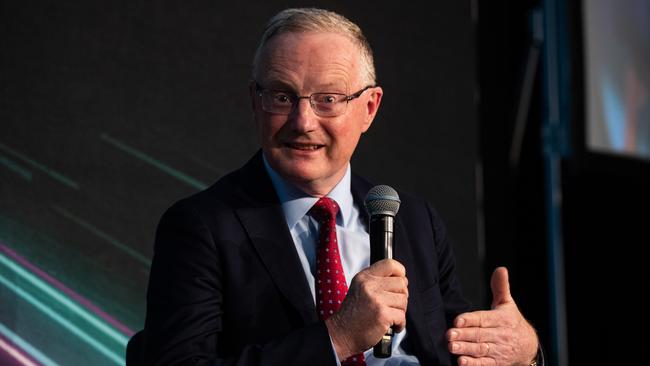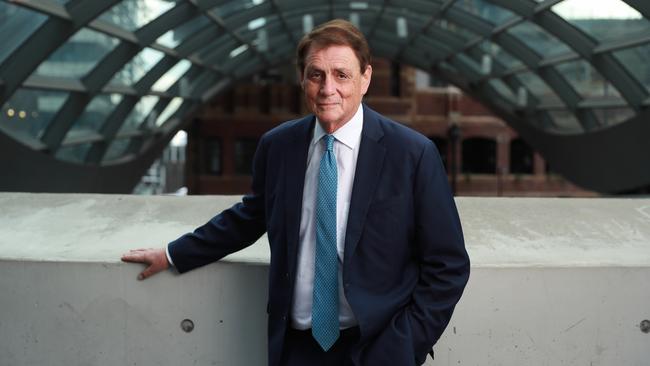The RBA’s minutes show the central bank considered leaving the cash rate unchanged
The Reserve Bank has dangled the potential for a pause in interest rate rises before struggling households as we approach Christmas, all while strongly hinting at more hikes.

The Reserve Bank has dangled the prospect of a pause in interest rate rises before households amid the Christmas shopping period, while strongly hinting that more increases may be needed next year to avoid a price-wages spiral and lower inflation to its target.
Minutes from the RBA’s December board meeting – when it raised the cash rate 25 basis points to a decade high of 3.1 per cent as expected – show the central bank considered leaving the cash rate unchanged for the first time since it started lifting from a record low of 10 basis points in May.
But as well as the 25 basis point increase that it decided on, the board also considered a 50 basis point increase, and it made a stronger case for 50 than no change.
Westpac chief economist Bill Evans said the minutes didn’t paint a dovish picture for the interest rate outlook, even though the board “considered the ‘pause’ option”.
“Having discussed a pause on multiple occasions in recent RBA communications, it would be surprising that the pause option was not raised at the meeting,” Mr Evans said.
“But the key is that the current forecasts, which have rates rising further, are still pointing to a number of years where the inflation rate is outside the range, so unless there has been a change in the data since those November forecasts were released, the board needs to press on.”

The minutes said the case for a 50 basis point rise stemmed from the fact that “inflation remained too high, and the economy continued to operate with excess demand”. And some other countries had earlier been in a similar situation to Australia and had subsequently seen wages growth pick up strongly, which risked high inflation becoming entrenched.
“In these cases, returning inflation to target was likely to involve a period of very weak demand, and possibly a recession,” the minutes noted. “Australia was not yet in such a situation, but the inflation mindset was shifting, with firms more willing to put up prices than a year earlier and upside risks to wages growth potentially building. Moreover, the cash rate was not yet at a high level historically and, if the board ultimately needed to move to a more restrictive policy stance, it would take some time for this to dampen demand. These factors supported an argument for taking more pre-emptive action.”
The minutes said the case for no change “placed further emphasis on the lagged effects of the large policy adjustment to date, and the value in proceeding cautiously in an uncertain environment”. But even with a terminal cash rate of 3.5 per cent assumed in the RBA’s November forecasts, inflation was expected to take several years to return to the target range.
“Incoming information had not warranted a reassessment of that broad outlook. Moreover, members noted that no other central bank had yet paused.”
It came as the Bank of Japan signalled the beginning of the end of its zero interest rate policy, by allowing 10-year Japanese government bond yields to fluctuate in a band 50 basis points either side of zero, versus its previously target band of 25 basis points.
Mr Evans said the key issues for the RBA were demand and wages growth, as indicated by the RBA’s comments that the “inflation mindset was shifting, with firms more willing to put up prices than a year earlier and upside risks to wages growth potentially building.”
In that regard, the minutes observed that “around 35 per cent of firms in liaison had reported wage increases of greater than 5 per cent in October and November”.
“Firms in liaison reported that labour availability remained a key challenge, although there were tentative signs this had started to ease a little,” the minutes added.
November’s employment data highlighted those prospects, with 3.4 per cent unemployment; 107,100 jobs added in October and November; a 0.2 per cent fall in the underemployment rate; record high labour-force participation and an employment-to-population ratio indicating very tight labour markets.
“Tighter labour markets than expected … raise the risk to the board that the scenario we have seen in other countries could repeat in Australia,” said Mr Evans.

“This risk will be even more of a concern if, as the board notes, resilience to the slowdown through household savings buffers, high fixed rate exposure from mortgages, and an ongoing reopening effect reflect solid spending momentum in the early months of 2023.”
The minutes also said “a range of options” could be considered again at upcoming meetings – the board “is prepared to keep the cash rate unchanged for a period while it assesses the state of the economy and the inflation outlook” but “did not rule out returning to larger increases” if needed.
CBA’s head of Australian economics Gareth Aird said the “intentionally vague” wording of the minutes indicate the RBA’s rate tightening cycle is “nearly done”.
“It appears that the RBA is going out of their way to show us that all options were on the table in December,” he said. “However, the key piece of information to us in the December minutes is the new information; namely that the board considered leaving the cash rate on hold in December.
“Overall, we are left with the impression that the RBA would like to pause in the tightening cycle, but we don’t know what they are willing to hang a pause on. The case to keep the cash rate unchanged for a period of time to assess the state of the economy and the inflation outlook is strong, and yet the board has not stated when that condition will be met.”




To join the conversation, please log in. Don't have an account? Register
Join the conversation, you are commenting as Logout